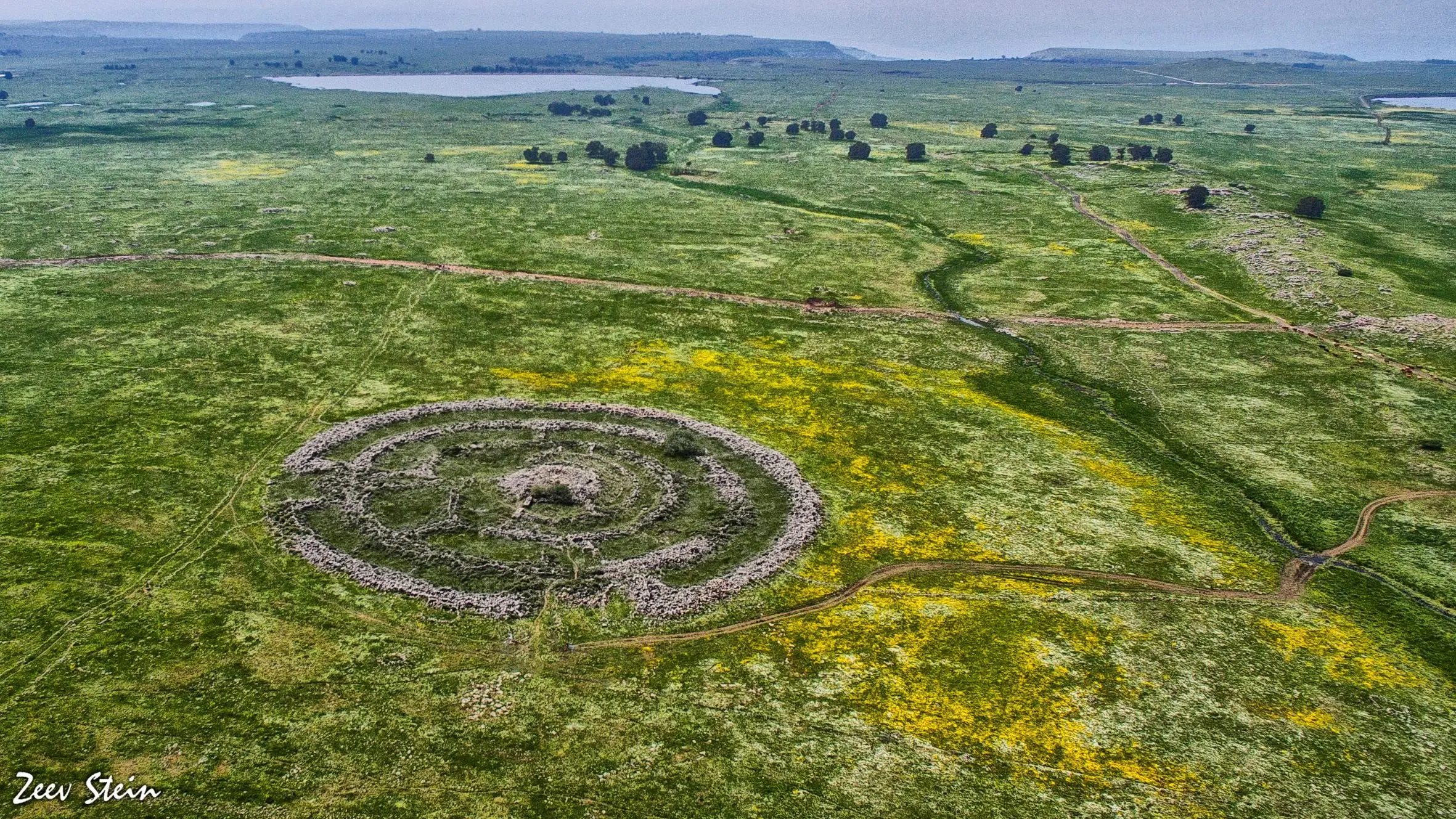Nestled in the enigmatic landscapes of the Golan Heights, Rujm el-Hiri, often referred to as the "Wheel of Ghosts," continues to baffle archaeologists, geophysicists, and historians alike. This ancient megalithic structure has long been cloaked in mystery, its purpose debated for centuries. Yet, recent studies reveal an even more astonishing secret—over the millennia, this "astronomical" marvel appears to have rotated itself. How could such an extraordinary phenomenon occur? Let’s delve into the history, characteristics, and the mysteries of this rotating wonder.

A Glimpse into History: The Birth of Rujm el-Hiri
Rujm el-Hiri, built between 4500 and 2300 BCE, stands as a monumental testament to human ingenuity during the Chalcolithic and Early Bronze Ages. Its name, meaning "Stone Heap of the Wild Cat" in Arabic, hints at its mysterious aura. To others, its nickname, the "Wheel of Ghosts," reflects the structure’s hauntingly intricate concentric stone circles that seem otherworldly.

Discovered in 1968, the site has intrigued researchers with its scale and complexity. Spanning approximately 150 meters in diameter, Rujm el-Hiri comprises a central cairn surrounded by concentric rings of basalt stone walls, some as high as 2.5 meters. With entrances carefully aligned to the northeast and southeast, early theories suggested the site functioned as an astronomical observatory akin to Stonehenge, aligning with celestial events like solstices and equinoxes.
The Unusual Characteristics of the 'Wheel of Ghosts'
The structure’s rings and radial walls create a labyrinth-like formation that is as striking as it is mysterious. The central cairn, believed to have served as a burial chamber or ritualistic center, adds to the mystique. Surrounding the main site, researchers have identified tumuli (burial mounds), linear walls, and flower-like clusters of smaller stone circles, suggesting a broader landscape of agricultural, pastoral, and possibly ceremonial uses.

Unlike other ancient megaliths, Rujm el-Hiri’s position and orientation challenge conventional understanding. Initial assumptions that the site was immobile and precisely aligned with the heavens have been called into question by modern research.
How Does the Wheel Rotate?
Recent geophysical and tectonic studies have uncovered a startling fact: Rujm el-Hiri has shifted its position over thousands of years. This "rotation" is not due to any mechanical device or deliberate human intervention but is instead the result of natural forces at work beneath the Earth’s surface.
The Golan Heights, located along the volatile Jordan Rift Valley, is a region shaped by tectonic activity. Paleomagnetic and geomagnetic analyses reveal that the entire area, including Rujm el-Hiri, has undergone slow counterclockwise rotations caused by shifting tectonic blocks. Over millennia, these movements, averaging 8–15 millimeters per year, have caused the site to subtly change its alignment, displacing it by tens of meters and altering its orientation, according to a study published in Remote Sensing.

This discovery is a game-changer, debunking the theory that the site was originally constructed with astronomical precision. The slow, imperceptible movement has disrupted its once-perfect alignment with celestial bodies, raising new questions about its original purpose and meaning.
The Mystery Behind the Mechanism
While the tectonic shifts provide a scientific explanation for Rujm el-Hiri’s rotation, the phenomenon invites more profound mysteries. How did the ancient builders choose this location, and were they aware of the geological forces at play? Did they design the site with this slow movement in mind, or was its apparent astronomical alignment a coincidental byproduct of its construction?

Adding to the intrigue, researchers have found evidence of continuous reuse and modification over centuries. Walls were rebuilt, new features were added, and some areas appear to have been entirely repurposed. This layered history makes it difficult to discern the original intent of the "Wheel of Ghosts."
The enigmatic name itself hints at the sense of the supernatural that surrounds the site. Could its builders have perceived the land as alive, subtly shifting and evolving with time? Or did they attribute the movements to divine or cosmic forces, integrating these beliefs into the structure’s purpose?
Unraveling the Wheel’s Secrets
Rujm el-Hiri’s slow rotation, driven by the Earth’s restless crust, paints a picture of an ancient world far more connected to the forces of nature than we might imagine. It challenges modern researchers to rethink the capabilities and understanding of its builders, offering tantalizing clues about their relationship with the land and the heavens.

The "Wheel of Ghosts" remains a haunting mystery, a symbol of humanity’s eternal curiosity about the unknown. As researchers continue to uncover its secrets, Rujm el-Hiri reminds us that even the most ancient monuments are not frozen in time—they, too, are part of a dynamic and ever-changing Earth.

Comments · 6
Guest 1739405684128
2 months agoHarry and Lola
2 months agoGuest 1726780661495
2 months agoGuest 1738718058351
2 months agoGuest 1735949509465
2 months ago